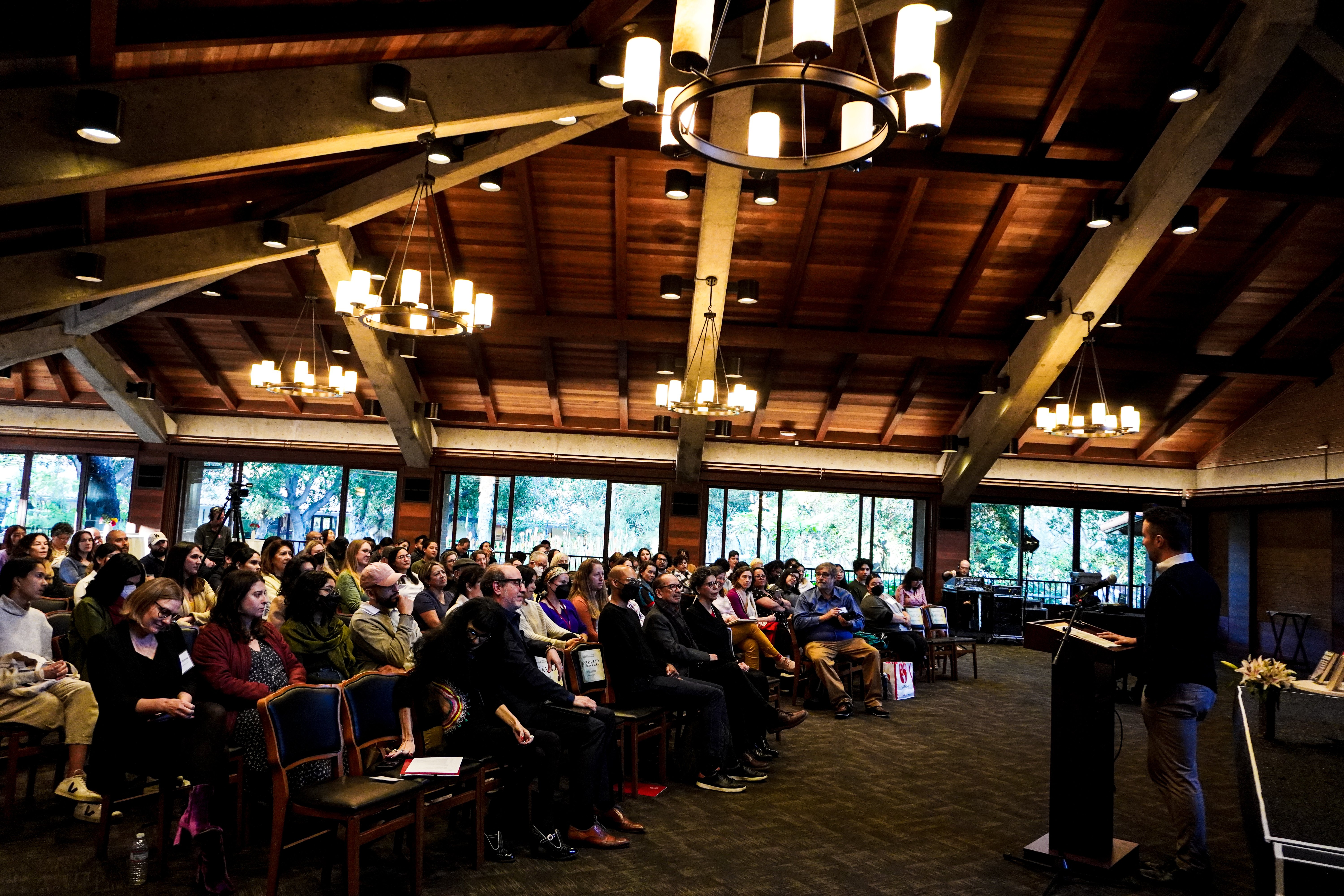At nine years old, Javier Zamora departed from El Salvador and crossed the U.S. border alone. Twenty-five years later, Zamora is a New York Times bestselling author writing on his experiences as an undocumented child migrant, hoping to take back ownership of the immigration narrative.
Last Thursday, Zamora and sociology assistant professor Asad L. Asad reflected on the diverse and complex experiences of Latinx migrants in Chautauqua, a quarterly book salon at the Center for Comparative Studies in Race and Ethnicity’s (CCSRE). Director of Research at CCSRE and Lee L. Jacks Professor of Education Alfredo J. Artiles moderated the conversation.
Zamora, a former Stegner Fellow, wrote his 2022 memoir “Solito: A Memoir” on his experience as an undocumented immigrant. He said one must understand the history of conflicts in El Salvador to fully understand his book.
Zamora learned of the Salvadoran Civil War from 1979 to 1992 after watching the film “Los Inocentes” and has since conducted research on immigrant’s native contexts.
“I never could get my parents to talk more about the war,” Zamora said.
Zamora delved into Latin American history and writing during his undergraduate studies at the University of California, Berkeley. He found that Washington aided the Salvadoran government’s military despite the group’s human rights abuses, comparing it to the U.S. government’s funding for the Israeli military during the Cold War to limit Soviet influence in the region. Washington’s spending in Israel topped that in El Salvador.
“The right wing military murdered 70,000 people from 1980 to 1992, and 38,000 of those, including my aunt and uncle, disappeared,” Zamora said of the war in El Salvador.
Inspired by the immigration stories of his Palestinian parents, Asad conducts research on Latino immigration, surveillance and social control.
To write his newest book, “Engage and Evade: How Latino Immigrant Families Manage Surveillance in Everyday Life,” Asad spent five years interviewing Latino immigrant families in Dallas County, Texas. During his time, Asad learned how they navigated surveillance while engaging with state institutions.
“The story I tell is at times optimistic and at times bleak, reflecting the structure of the U.S. immigration system,” Asad said.
Asad and Zamora also discussed the importance of healing in enabling them to communicate immigrant experiences with a full breadth of emotions.
While writing his book, Asad wrestled with the loss of his brother. In the process of grieving, he was able to more deeply understand the families he interviewed.
“Even as I maintained my professional composure to keep [their stories’] general structure, I sought to add a bit more of me and what I’ve accepted into my own life,” Asad said.
Zamora said he was able to write “Solito” only after many years of healing, through therapy and poetry. After undergoing the 3,000-mile journey to reunite with his parents as a child, Zamora became less willing to trust his surroundings.
“A lot of how I wrote the book is therapy, healing — and a lot of it was trusting my memories,” Zamora said.
Amid the difficult realities explored in Asad and Zamora’s books, the work of both authors seeks to give a fuller picture of immigration and to bring hope for a better future.
“It is my job, as a dreamer, as a writer, to provide something else,” Zamora said.
